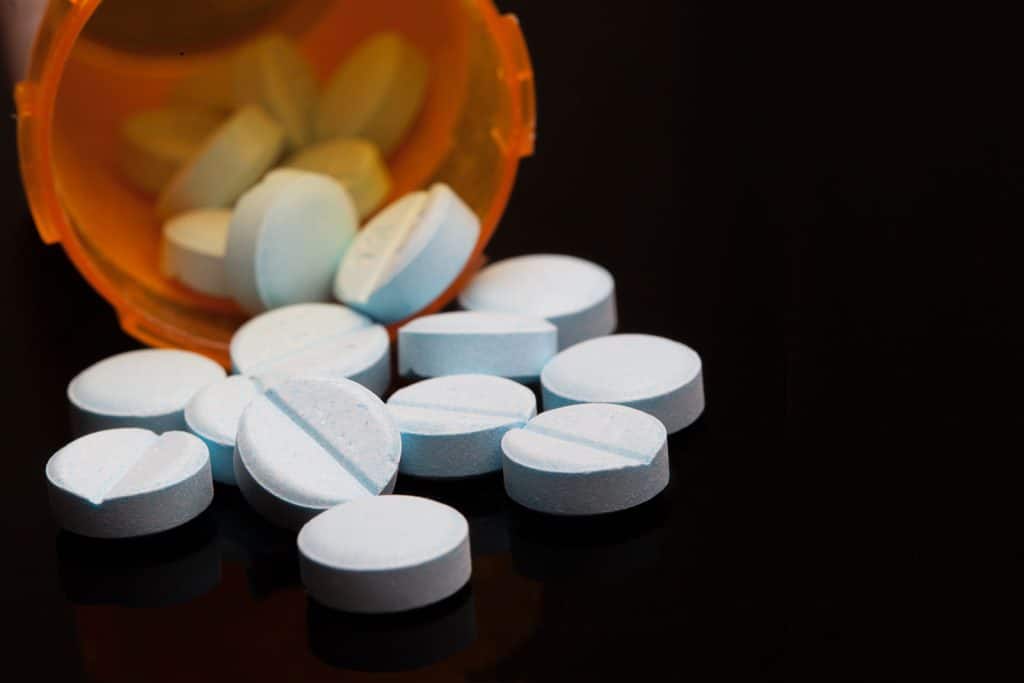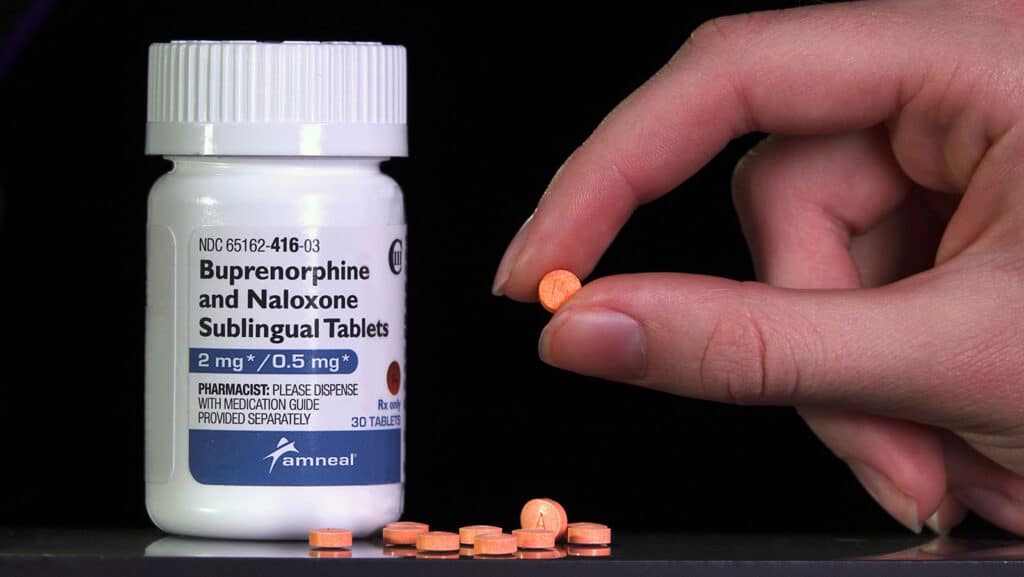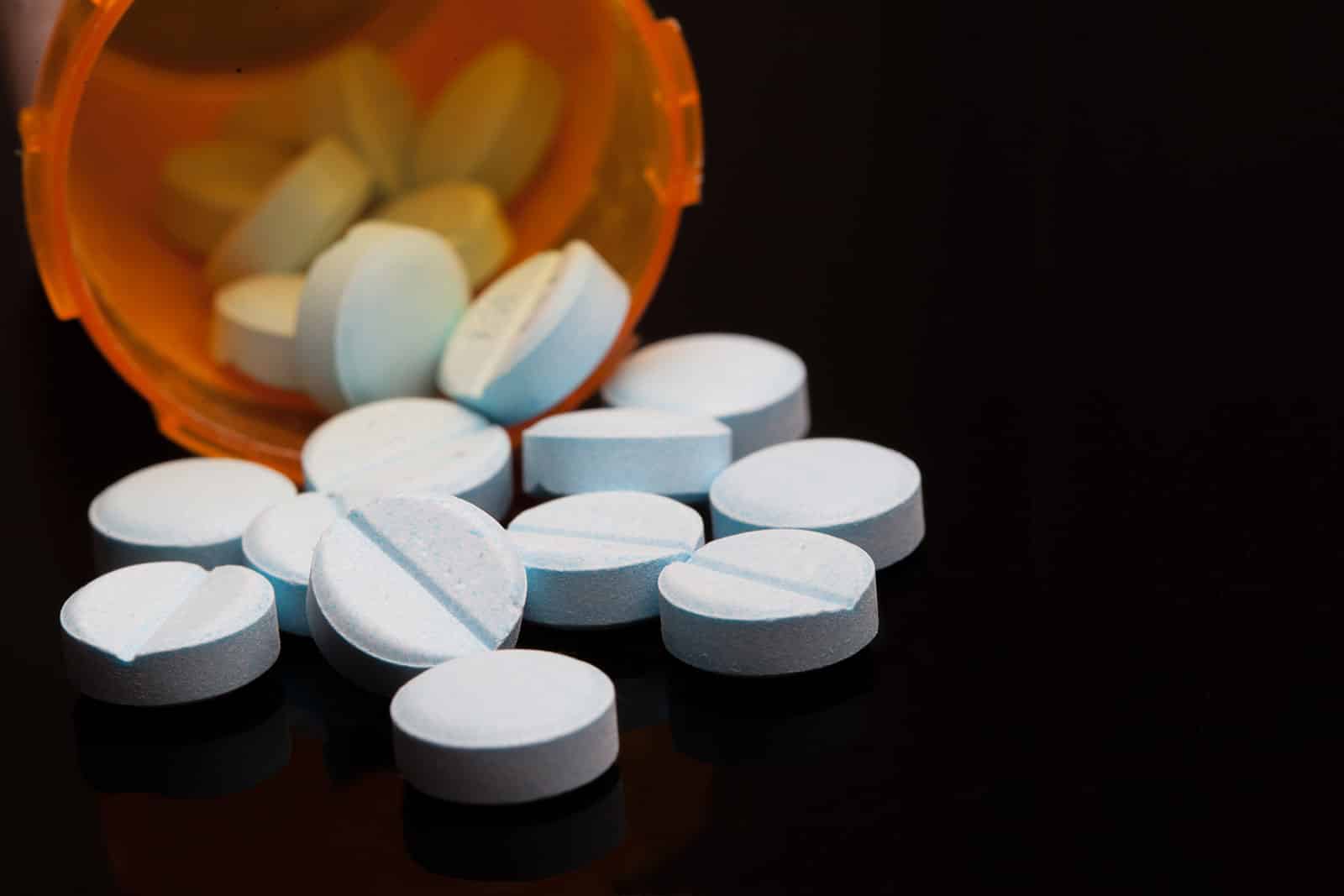You may have heard that Suboxone is a medication that can block the effects of opiates, and you are wondering if it is an effective treatment for your substance use disorder. The medical community uses Suboxone as the preferred method of treatment for opioid use disorder because the buprenorphine component of the medication effectively blocks opiates, and it can do this for as long as 36 hours.
Table of Contents
- 1 How Long Does Buprenorphine (Suboxone) Last?
- 2 What Are Opioids/Opiates?
- 3 What Is Buprenorphine?
- 4 How Does Suboxone Block Opiates?
- 5 What Is Naloxone?
- 6 Should I Take Buprenorphine?
- 7 Opiate Withdrawal Symptoms
- 8 What Is Medication-Assisted Treatment?
- 9 Co-occurring Mental Health and Substance Use Disorders
How Long Does Buprenorphine (Suboxone) Last?
Suboxone’s half-life is equal to 42 hours. The half-life is the measurement of how long it takes the body to metabolize half of the drug. Therefore, if the medication remains in the body for a longer time, it will block the effects of opiates for a longer time as well. If you were to take morphine, fentanyl, or heroin within 24 hours of taking your last dose of Suboxone, the opiates would not be able to exert any effects.
| Factor | Duration |
|---|---|
| Immediate Effects | Begins within 30 minutes to 1 hour |
| Peak Effect | 1 to 4 hours after administration |
| Duration of Action | 24 to 72 hours |
| Half-Life of Buprenorphine | Approximately 24 to 42 hours |
| Overall Opiate Blocking Duration | Typically 24 to 72 hours, can extend depending on dose and individual metabolism |

What Are Opioids/Opiates?
Opioids are also known as “opiates,” and they include painkillers that you can get with a prescription from your doctor, but they can also be illegal substances that include heroin and illicitly manufactured fentanyl. Opiates are classified in Schedule II of the Schedules of Controlled Substances, which means that the Drug Enforcement Administration considers these drugs to be highly dangerous. They are extremely likely to lead to an addiction, so physicians only prescribe them for short periods of time.
The body has opioid receptors that control pleasure and pain, and opioids bind to these receptors. When this occurs, it can block the pain signals that the brain sends out and releases more dopamine into the system. Dopamine has the responsibility of helping you make decisions, but it also creates a pleasurable feeling that comes from the expectation of a reward. Because dopamine is being released, this encourages you to continue to take more opiates and leads to an addiction to these substances.
What Is Buprenorphine?
Buprenorphine is a component in Suboxone, and the FDA approved it as a treatment for substance use disorder. It is different from other substances used to treat this disorder because it must be prescribed by a healthcare professional. Suboxone is a combination of buprenorphine and naloxone.
As a partial opioid agonist, buprenorphine acts like an opioid, so it creates the effects that heroin creates, but these effects will not be as strong. It also creates a “ceiling effect” that causes the effects created by the substance to level off after a certain point even if you ingest more of the opioid.
Naloxone is an opioid antagonist, so it blocks the effects of opioids. The addition of this substance discourages people from injecting Suboxone. Instead, they are required to swallow a tablet or take it as a sublingual film. If you were to inject an opioid, the naloxone would cause you to experience distressing withdrawal symptoms. Since you are not injecting Suboxone, the medication can begin to take effect in the fastest manner.
How Does Suboxone Block Opiates?
Suboxone blocks opiates and opioids by a process known as “affinity.” As was mentioned above, the brain has several opioid receptors, and all opioids and opiates bind to these receptors. The ”mu” is the receptor that is associated with overdose, sedation and euphoria.

Affinity refers to how easily an opioid can bind to an opioid receptor. Since only one opioid with the highest affinity can attach to one receptor at a time, the Suboxone prevents other opioids from attaching to the opioid receptors. Because buprenorphine has a higher affinity than other opioids, it can effectively block the effects of other opioids as it remains attached to the receptors.
When an opioid is a partial agonist, it cannot fully activate an opioid receptor. This either reduces its ability to create a high or keeps it from creating the high altogether. This is the reason that physicians use Suboxone during the maintenance phase of treatment for opioid use disorder.
Methadone is also used during the treatment phase, and it is a “full agonist.” Because it is a slow-acting substance, the high that it creates isn’t very strong. A dose of methadone will not become fully active until at least two or three hours have passed, so its half-life can last as long as 60 hours!
What Is Naloxone?
Naloxone is the second ingredient in Suboxone, and it reverses the effects of an overdose. Fortunately, it does so very quickly. When it begins to work, it rapidly causes the victim to breathe normally again. This can be the case even if the person’s breathing has slowed down considerably or even stopped.
Naloxone has a high affinity, so it can kick other opioids off of the opioid receptors and reverse the effects of an overdose. Naloxone cannot produce euphoric effects, so when it binds to opioid receptors, it blocks the other opioids and forces them to circulate around the system. Opioids have the potential to kill the user because they bind to so many opioid receptors in the brain stem that the victim has difficulties breathing. After ingesting naloxone, the body takes the other opioids and breaks them down so that they can be eliminated.
Should I Take Buprenorphine?
Each person is different, and every treatment option doesn’t necessarily work for everyone. When you enter Allure Detox, we will assess whether or not buprenorphine is a medication that can work for you. You will need to be aware of the fact that you cannot receive Suboxone until 12 to 24 hours have passed since you last ingested opioids.
Different people also need to take Suboxone for different lengths of time. For example, some people need Suboxone on an indefinite basis if it continues to work for them. Once the cravings for opioids have subsided, your physician will be able to reduce your dose of Suboxone. For example, as you become more stable after taking Suboxone on a daily basis, your physician may reduce your dose to every other day.

Opiate Withdrawal Symptoms
It may only take a couple of weeks of using opioids to become addicted to these substances. When this occurs, your body wants you to continue, so if you stop, it will send out several withdrawal symptoms. If you have been taking opioids for longer than two weeks, you wouldn’t be advised to stop taking them on your own. That is because the withdrawal period can be very dangerous, and the symptoms can be severe. Opiate withdrawal symptoms can include the following:
- Body aches
- Sweating
- Hypertension
- Seizures
- Fast heartbeat
- Vomiting
- Hallucinations
- Rapid breathing
What Is Medication-Assisted Treatment?
Medication-Assisted Treatment or MAT is a process by which we will detoxify your body. At Allure Detox, we will place you in our MAT program first so that we can remove all of the substances from your body. One of the medications that we can administer to you at this time is Suboxone, but we also have other options. These include naltrexone, VIVITROL and naloxone. The medications we administer will ease the withdrawal symptoms so that your body has a chance to metabolize all of the opioids in its system. They will also relieve the extreme cravings you will have for opioids.
During the detoxification process, you will be in the best condition to begin confronting your psychological addiction to opioids. At Allure Detox, we treat your psychological addiction with several types of behavioral therapies. These include the following:
- Individual therapy
- Gender-specific counseling
- Family counseling
- Contingency management
- Cognitive-behavioral therapy
- 12-step facilitation sessions
- Dialectical behavior therapy
- Motivational interviewing

Co-occurring Mental Health and Substance Use Disorders
Mental health disorders and substance use disorders co-occur in large numbers of the population. When a mental health disorder and a substance use disorder present themselves at the same time, they are known as “co-occurring.” At Allure Detox, we also offer mental health therapies for the treatment of co-occurring disorders.
You will need to be evaluated for a mental health disorder when you come to Allure Detox. It wouldn’t be surprising that you are experiencing both of these conditions because 7.7 million adults have been diagnosed with mental health disorders and substance use disorders at the same time.
The medical community can never definitively state which disorder presented itself first, but of the 42.1 million adults diagnosed with mental health disorders, 18.2% were also diagnosed with substance use disorders. Conversely, of the 20.3 million adults diagnosed with substance use disorders, 37.9% were also diagnosed with a mental health disorder. You will receive a thorough exam to determine whether or not you have a mental health disorder. Then, we can draw up a treatment plan that addresses your needs and your goals.
If you are willing to do what you need to do to be free of opioids, contact us at Allure Detox so that we can get your life back on track again.


